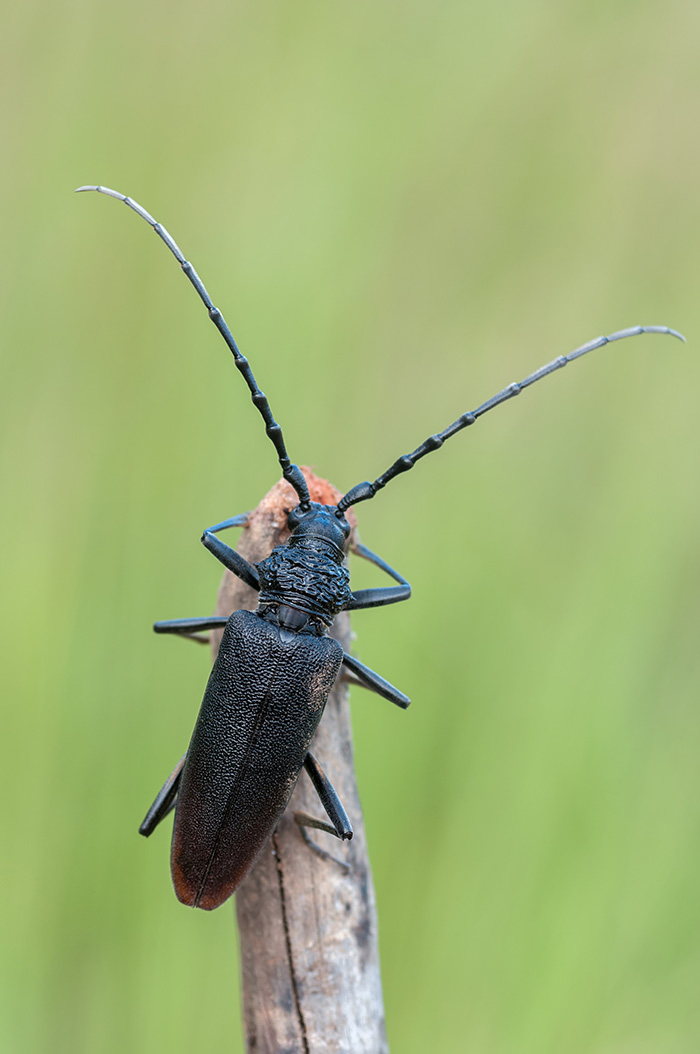The Great Capricorn beetle Cerambyx cerdo – Natura 2000 code 1088, Family Cerambycidae
Listed in Annex II of Habitats Directive (U2 – Unfavourable-Bad in RO Alpine biogeographical region), Near Threatened according to IUCN RedList Europe. Not mentioned in SDF of ROSCI0208 but included in the latest inventories carried out by the park administration. Estimated in RO Alpine biogeographical region as present in 1500 km2.

The adults of this species can be observed between May and September, being generally active at twilight is, feeding on the sap that appears on injuries in the bark and on mature fruit. Between May and September, the female can lay up to 300 eggs in deadwood part of living, very old and unshaded trees (injuries on the trunk or in branches of very old trees). The larvae appear around 10 days later. In the project area, Cerambyx cerdo can be found in deadwood of standing veteran oak trees (Quercus sp) and other deciduous species selecting very old oaks and decaying trees that have a diameter larger than 40 cm.
The species is marginally present in the area due to the limited availability of oak forests, however, the population is high (40 individuals per ha in oak stands). The species is still considered a pest by forester and during the project, we will build up evidence to reconsider its status by demonstrating efficient concrete conservation measures such as veteranization of trees.



